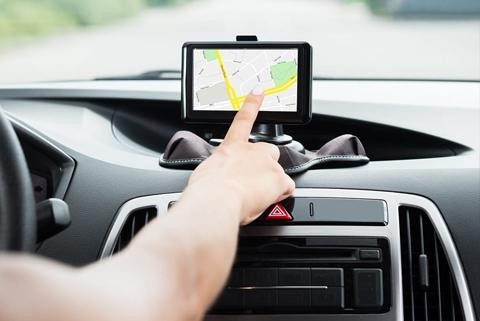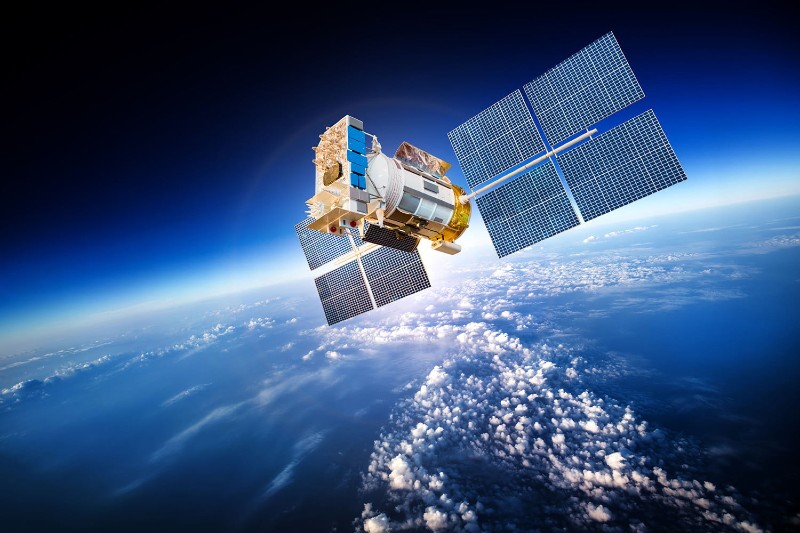Difference Between GPS Tracking & GPS Navigation
One of the most common assumptions people make when they hear the term “GPS” is that GPS tracking and GPS navigation are the same things. While both tools use the Global Positioning Satellites, the two activities are different as are the devices and services. It doesn’t help that when you watch a TV show or go to the movies, the characters often talk about tracking people using their phone. So, what exactly is the difference between GPS tracking and GPS navigation? Let’s look at each of them individually.
GPS tracking, which is utilizing satellite information to record one’s course of travel is a very different aspect that GPS navigation, which is using satellite information to determine a course of direction. One involves information in the past tense of what already occurred, and one is dealing with information of what could be in terms of travel to come. Understanding the difference between the two is essential to interpret GPS information correctly.
The Purpose of a GPS Navigation Device
When people talk about GPS navigation, what they usually mean is using an app, a device, or a built-in navigation system in your vehicle to find your way or give you directions so you can get to where you want to go without getting lost. These apps and devices receive information from GPS satellites based on information you input such as an address or landmark that you’re trying to get to.
They also might use cellular towers or Wi-Fi signals to help the app or device know where you are so it can plot an accurate route or get information to you about the distance from where you are to where you’re going as well as information on road conditions, traffic, and if there are any accidents or other emergencies along the route.
The easiest difference to remember about GPS navigation is that it’s meant to send and receive information between the GPS satellite system and a driver or individual who is in the same location as the app or device being used so they can find another location.
GPS technology in general involves satellites sending data to a receiver. That component sits in whatever device the person is using to get location information. When presented in a visual format, the location information per satellite measurement is displayed visually on a computerized map of the location. With that graphical display a person can either see where they need to go to get to destination or where they have been.

The Purpose of a GPS Tracking Device
GPS, or global position system, is a commonplace technology today that can be found in hand-held devices, on smartphones and inside vehicle direction equipment. Because GPS relies on the triangulation from multiple satellites, it tends to be highly accurate when used correctly. And it becomes very convenient versus trying to interpret position and direction from a paper map.
When we talk about GPS tracking, we mean a device that receives information from GPS satellites and then sends information to someone who is as far as hundreds of miles away from the device. The device can be hardwired as part of the vehicle or it can be as tiny as a sim card and hidden. The information display can be another piece of equipment at an office, or it can be an app on a manager’s smartphone.
GPS tracking is mainly used to keep track of where something or someone is. It can also be used to monitor the health of something like a vehicle such as its fuel consumption or if it’s not where it’s supposed to be. GPS tracking can be used to keep track an entire fleet of trucks, to track the whereabouts of cargo, or to track and find pets, kids, and dementia patients who have wandered outside of a set area.
GPS tracking can serve a lot more functions than a GPS navigation app or device can, and a GPS tracking service provides a lot more than just maps for navigation. GPS tracking can monitor safety, send out maintenance reminders, and help businesses improve timekeeping.
How These Tools are Used
Both types of tools will be usable with a visual display, as noted above. This allows users to make changes to the appearance of the information provided. More advanced units can zoom in and out for greater distance measurements, they tend to be in color for easier visual differentiation, and nicer models save the travel or destination information for future reference. These days the most common GPS tool tends to be the GPS navigation in a car, which of course makes a lot of folks think that it is synonymous with a GPS tracking tool. In fact, some car systems can provide both features in the same visual display, which confuses things even further.
The beauty of GPS is that it works in just about any location where a clear signal can be obtained. The receiver in the tool simply needs to have an unobstructed field of access, and it will receive the data from the multiple satellites orbiting the planet 24/7. No surprise, GPS tools have become standard for all types of consumers traveling, whether it’s just hobbyists or professionals needing to keep track of where they are versus going. GPS tracking has also been integrated with multiple aspects of life, from tracking deliveries and routing shipping supplies to confirming where people are when they are being tracked by law enforcement as part of a criminal penalty.

GPS tools have historically had their best application for tracking out in the field and wild, whether on the ocean or in the deepest jungles and remote deserts. However, as the consumer market entered the picture, the GPS navigation side of things took off significantly, and now GPS destination mapping has become just as much a desired benefit as knowing where one has been. What used to be primarily the equipment of a ship navigator or archeologist is now used by parents finding a soccer field for a weekend kids’ game and campers looking back on how far they hiked in a national park trail area. No surprise, more applications will increase GPS’ demand, making it as commonplace in use as the wristwatch was before the smartphone came along.
In the movies, law enforcement or government agents sit in a room watching a map as they “track” a suspect’s vehicle or cell phone. In reality that’s not how GPS tracking or GPS navigation works. That kind of GPS tracking only works if there is already a GPS tracking device on the person or vehicle that the police are looking for. GPS tracking is an invaluable tool for a whole host of businesses, organizations, and industries, including the trucking industry. It’s also used by private citizens to keep children, Alzheimer’s and dementia patients, and pets safe.
GPS navigation or “personal navigation” is not tracking. It’s a navigation tool that replaces paper maps and a compass that helps individuals find where they are and find their way from their location to another one. It cannot be used to track another person from afar.
We hope that’s cleared up at least some of the confusion and misunderstanding between GPS tracking and GPS navigation. If you have any comments or questions about GPS tracking, leave them in the comments section below or contact us here at GPS Technologies.
Categorised in: GPS Tracking Service
This post was written by Malcolm Rosenfeld
